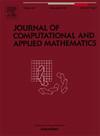Alpha-maxmin mean-variance reinsurance-investment strategy under negative risk dependence between two markets
IF 2.1
2区 数学
Q1 MATHEMATICS, APPLIED
Journal of Computational and Applied Mathematics
Pub Date : 2025-01-16
DOI:10.1016/j.cam.2025.116501
引用次数: 0
Abstract
This paper investigates the optimal reinsurance-investment problem in the context of negative dependence between the insurance and financial markets, stemming from the general risk dependence between the jump–diffusion process of risky asset prices and aggregate claims process. Under the -maxmin mean–variance (MV) criterion, the insurer is allowed to purchase per-loss reinsurance and invest in a financial market, with the generalized mean–variance premium principle employed to calculate the reinsurance premium. By solving the corresponding Extended Hamilton–Jacobi–Bellman (EHJB) equation, we derive the -robust equilibrium reinsurance-investment strategy and then discuss the form of the optimal reinsurance strategy. Our findings indicate that, under the assumption of negative dependence, investing can serve as a more effective risk-hedging tool for claims risk, prompting the insurer to favor investing in risky asset while retaining a greater proportion of claims compared to scenarios without such dependence. Furthermore, assuming the presence of negative dependence, the variance premium principle indicates that a combined form of proportional and excess-of-loss reinsurance is optimal, rather than solely proportional reinsurance with the majority of papers recognizing. Finally, a sensitivity analysis is performed with numerical examples, and the impact of various parameters on the results is analyzed.
求助全文
约1分钟内获得全文
求助全文
来源期刊
CiteScore
5.40
自引率
4.20%
发文量
437
审稿时长
3.0 months
期刊介绍:
The Journal of Computational and Applied Mathematics publishes original papers of high scientific value in all areas of computational and applied mathematics. The main interest of the Journal is in papers that describe and analyze new computational techniques for solving scientific or engineering problems. Also the improved analysis, including the effectiveness and applicability, of existing methods and algorithms is of importance. The computational efficiency (e.g. the convergence, stability, accuracy, ...) should be proved and illustrated by nontrivial numerical examples. Papers describing only variants of existing methods, without adding significant new computational properties are not of interest.
The audience consists of: applied mathematicians, numerical analysts, computational scientists and engineers.

 求助内容:
求助内容: 应助结果提醒方式:
应助结果提醒方式:


